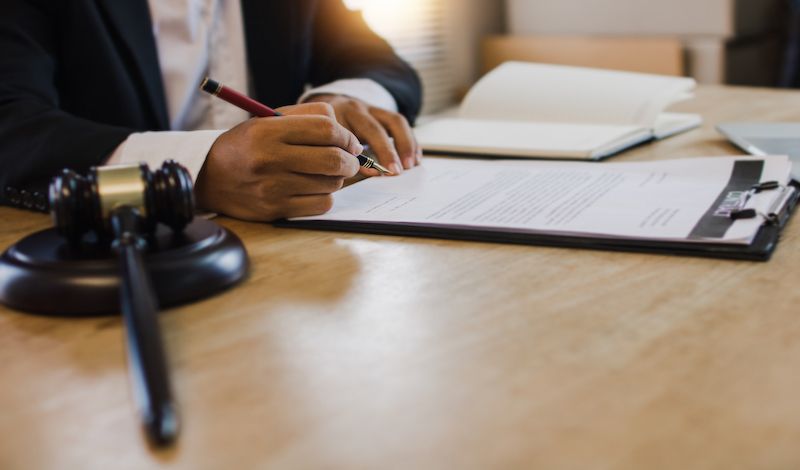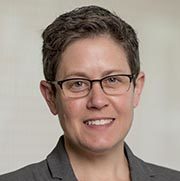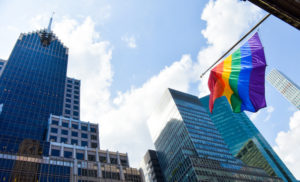
Diversity training and professional conduct rules can improve LGBTQ experiences with government and the law.
The systems through which states license and discipline attorneys likely are not top of mind when considering the ways in which LGBTQ+ communities experience government and law or how existing systems of power ignore and exclude LGBTQ+ people. Perhaps they should be.
It is beyond dispute that the law regulates sexual orientation and gender identity—frequently in ways that harm LGBTQ+ communities. Moreover, discrimination and marginalization are compounded for LGBTQ+ people of color and for LGBTQ+ people with disabilities.
LGBTQ+ communities have long experienced law and regulation largely as tools of exclusion, violence, and cruelty, from then-President Dwight D. Eisenhower’s 1953 executive order effectively banning LGBTQ+ people from federal employment, to the U.S. Supreme Court’s 1986 decision in Bowers v. Hardwick upholding Georgia’s sodomy law as a constitutional exercise of legislative power, to the 1993 “Don’t Ask, Don’t Tell” U.S. Department of Defense directive barring LGBTQ+ people from serving openly in the military, and to then-President Donald J. Trump’s rollback of pro-LGBTQ+ agency guidance and his ban on transgender people in the military.
For decades, LGBTQ+ advocacy groups and civil rights lawyers have fought back against the legal and regulatory marginalization of LGBTQ+ people—with positive results. Examples of regulatory progress and formal legal equality for LGBTQ+ people include marriage equality, overturning Bowers, the expansion of federal employment protections, and President Joseph R. Biden’s executive order to prevent and combat sexual orientation and gender identity discrimination in housing, health care, education, credit, and employment.
Despite this progress, inequality persists and anti-LGBTQ+ backlash runs deep. Most recently, some organizations and individuals have requested religious exemptions from state public accommodations laws and there has been a wave of anti-transgender bills proposed by legislators seeking to criminalize gender-affirming health care for transgender youth and bar transgender girls from participating on girls’ sports teams.
Public-facing work by attorneys, such as impact litigation and regulatory advocacy, are well-known strategies of the LGBTQ+-rights movement. An inward-looking strategy—examining the attorney regulation system to interrogate the role it might play in advancing LGBTQ+ rights—is likely less prominent in the minds of attorneys and members of the public. Attorney regulation may, however, provide fertile ground for advancing and protecting LGBTQ+ equality.
Two aspects of states’ attorney regulation systems provide an opportunity for advancing LGBTQ+ equality: continuing legal education, and the rules of professional conduct.
Continuing legal education (CLE) is post-licensure professional education for attorneys. CLE is generally mandated for all active attorneys in states with a CLE requirement. Each state issues its own rules concerning how many CLE credits attorneys must complete within a reporting period. Forty-six states require CLE to maintain a law license.
In 2017, the American Bar Association recommended a requirement of one credit hour of CLE addressing issues of diversity, equity, and inclusion. A growing number of states have adopted some version of the American Bar Association’s recommendation. By the end of 2020, 10 states added a diversity, equity, and inclusion CLE requirement; in 2021, three more states joined the list.
Diversity, equity, and inclusion CLE offerings touch on multiple axes of diversity, such as race, sex, disability, and national origin, in addition to sexual orientation and gender identity. Requiring diversity, equity, and inclusion CLE credits thus benefits attorneys, litigants, and members of the public who hold many types of marginalized identities.
A mandatory diversity, equity, and inclusion CLE requirement may hold particular potential for countering anti-LGBTQ+ bias against attorneys and litigants within the legal system. Even though the profession has changed for the better for LGBTQ+ attorneys, work still remains to ensure a truly inclusive profession. In a recent American Bar Association survey of attorneys, 40 percent of respondents reported experiencing unintentional, subtle biases and more than 20 percent reported experiencing intentional, subtle biases.
Transgender and nonbinary attorneys face a higher risk of experiencing bias in the legal profession than do their LGB colleagues. Unsurprisingly, intersectional LGBTQ+ attorneys—LGBTQ+ attorneys of color and LGBTQ+ attorneys with disabilities—also face additional hurdles to inclusion within the profession. Yet, fewer than half of the respondents in the American Bar Association survey reported that they had found effective mitigation strategies to deal with these biases, indicating that external and systemic mitigation strategies likely are needed.
Mandatory diversity, equity, and inclusion CLE may be a potential external, systemic strategy for ameliorating anti-LGBTQ+ bias in the profession. More concretely, diversity, equity, and inclusion training may assist legal organizations in reevaluating processes surrounding recruitment, hiring, promotion, retention, and benefits programs to expose implicit or explicit barriers for LGBTQ+ attorneys and staff.
Clients, potential clients, and litigants also face anti-LGBTQ+ bias from within the profession. For example, transgender people often have difficulty finding a culturally competent attorney to represent them in the myriad of legal obstacles that may face them, such as over-policing, lack of access to health care, and discrimination in child custody, probate, and youth emancipation cases.
Transgender and gender nonconforming litigants also report mistreatment by legal aid attorneys, courts, and judges. Low-income and transgender people of color often face hurdles to accessing justice and to being accorded due process. In one case, attorneys sought to misgender transgender litigants and, when denied their request by the judge, they requested the recusal of the judge. Mandatory diversity, equity, and inclusion training may expose these biases to those who have the power to rectify them.
Anti-LGBTQ+ bias within the legal profession may spill over into disputes over substantive legal questions, such as whether a professor at a public university has a constitutional right to misgender a transgender student. Thus, mandating diversity, equity, and inclusion CLE may also result in increased substantive equality for LGBTQ+ people.
Mandatory diversity, equity, and inclusion CLE aligns with lawyers’ obligations under the rules of professional conduct. All 50 states and the District of Columbia have rules that govern attorney conduct. Violation of these rules may result in discipline ranging from a private reprimand to disbarment.
In 2016, the American Bar Association amended its model rule of professional conduct that defines attorney professional misconduct. It adopted a new model rule that explicitly bars lawyers in any conduct “related to the practice of law” from discriminating or harassing individuals based on sexual orientation and gender identity (among other characteristics).
At the time the American Bar Association adopted its new rule in 2016, 20 states already had in place an analogous rule. Since 2016, two states have adopted the model rule and 13 states, including the District of Columbia and Puerto Rico, are studying the rule.
The explicit prohibition of sexual orientation and gender identity harassment or discrimination by 22 states buttresses the call for mandatory diversity and inclusion CLE by all states. For many states without a rule that tracks the model rules, requiring diversity, equity, and inclusion CLE is scaffolded by the general prohibition of attorney conduct that is “prejudicial to the administration of justice”—language that is present in some form in the rules of professional conduct of all but seven states.
Mandatory diversity, equity, and inclusion CLE training requirements, along with more inclusive rules of professional conduct, hold the potential for improving the ways in which LGBTQ+ communities experience government and law.
Much of today’s anti-LGBTQ+ backlash is merely an iteration of anti-Black bias and discrimination. Furthermore, many LGBTQ+ people have intersectional identities. The fact that diversity, equity, and inclusion training addresses the elimination of bias against LGBTQ+ people as well as against others with marginalized identities only strengthens the argument for requiring this type of CLE.
This essay is part of a 9-part series, entitled LGBTQ+ Rights and Regulation.




